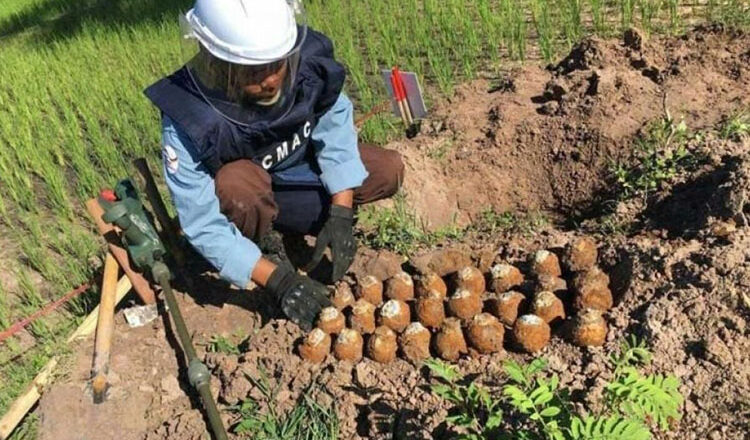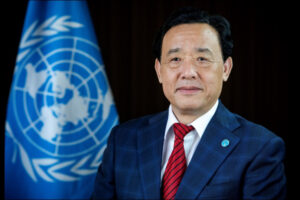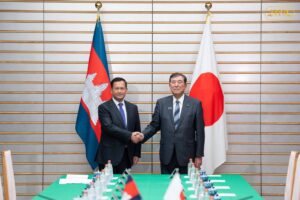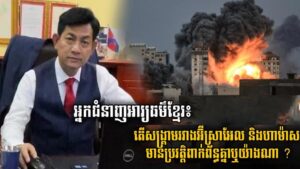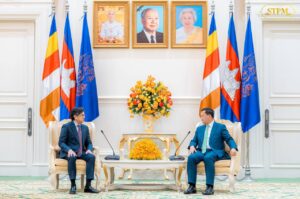Opinion: On Thai Military’s Use of Cluster Bombs and International Media Outlets
Khmer Times | I have seen little reporting from international media outlets on the Thai military’s use of cluster bombs, even after the Thai military itself admitted to deploying them. [1] The use of such indiscriminate weapons is appalling, but unfortunately not unprecedented in Thai military’s method of operation (modus operandi). In fact, the Thai military last used cluster bombs during a similar border dispute with Cambodia in February 2011.[2]
As the International Committee of the Red Cross explains:
“Civilian casualties during conflict often occur because cluster munitions scatter huge numbers of explosive submunitions over very large areas. Some models discharge hundreds of submunitions over more than 30,000 square metres of territory. Since these submunitions are generally free-falling, various factors–such as human error and wind–can cause them to strike well outside the intended target area.
In addition, large numbers of submunitions often fail to detonate as intended, contaminating large areas with deadly unexploded ordnance. Many thousands of civilians have been killed or injured by these devices. The presence of these weapons makes farming a dangerous activity and hinders the reconstruction and development of vital infrastructure such as roads, railways and power plants. Clearing unexploded submunitions after a conflict is often difficult and dangerous–some countries have been dealing with this problem for decades.”[3]
Although neither Thailand and Cambodia are parties to the Convention on Cluster Munitions, the Thai military’s use of these weapons may nonetheless violate core international humanitarian law principles by causing unnecessary suffering and carrying out indiscriminate attacks. In contrast, Cambodia has never used, produced, or exported cluster bombs,[4] and had actively condemned their use on the international stage.[5] Having endured decades of genocide and war, Cambodia knows all too well the devastating impact of cluster bombs as it continues to suffer from the lasting impact of millions of submunitions dropped during these decades, which have injured civilians, hindered development, and instilled fear across entire communities for generations.
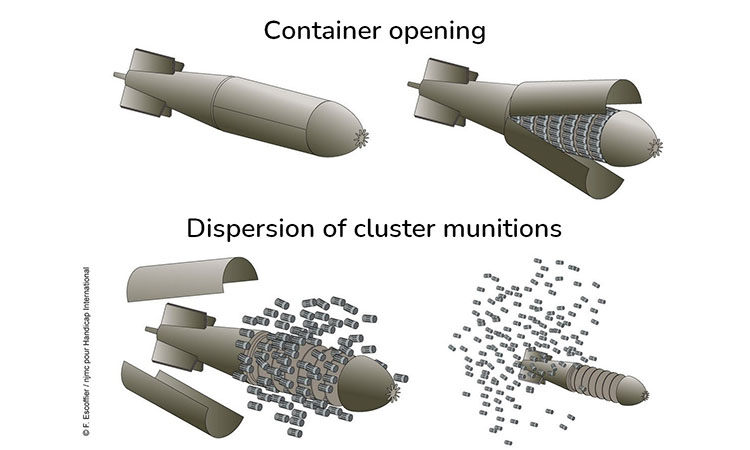
It is disappointing that international media outlets have paid scant attention not only to the Thai military’s use of cluster bombs, but also to the broader context of the conflict itself. These outlets have largely failed to understand the historical and political context of the Cambodia-Thailand conflict, resulting in fragmented, incomplete, and at times biased coverage. They have overlooked the fact that what is happening now reflects a longstanding pattern in the Thai government and military’s conduct–Cambodia has often been used by the Thai government and military to stoke nationalist sentiment and serve domestic political interests.
In the 1950s, shortly after Cambodia gained independence from France, the Thai military mobilized troops to the Preah Vihear Temple area in an attempt to assert its claims. The conflict was brought before the International Court of Justice (ICJ), who decided in 1962 in favor of Cambodia.[6]
Again in 2008, when Cambodia nominated Preah Vihear temple as a UNESCO World Heritage Site, the Thai military mobilized forces in the area resulting in armed clashes. Cambodia responded by submitting a request for clarification of the 1962 ruling, and in 2013, the ICJ again ruled in favor of Cambodia.[7]
Now, in 2025, before the violent clashes that have been happening in the past three days, Cambodia submitted, on 15 June 2025, a request to the ICJ to resolve the border dispute with Thailand. The Thai government refused to acknowledge the ICJ’s jurisdiction.[8] An astute observer can see that the Thai government and military are not seeking for a peaceful resolution in accordance with international law.
What the Thai government and military are doing is sadly familiar to Cambodians. This is why, for many Cambodians, it is so frustrating to witness international reporting that is shallow or biased. Does it make any sense for Cambodia–a nation still burdened by the scars of war–to instigate war against a larger neighbor possessing superior military capabilities? Just two days ago, alongside the use of cluster bombs, the Thai military deployed F-16s fighter jets.[9]
Views and opinion expressed here are my own.
Prof. Sothie Keo, Secretary of State of the Ministry of Post and Telecommunications
Vice-Chair of Cambodian Human Rights Committee
Law Professor at the American University of Phnom Penh
Cluster bomb diagram is by Handicap International.
Photo is by the Cambodian Mine Action Centre (CMAC) showing cluster bombs found by Cambodian deminers.
[1] https://x.com/armypr_news/status/1948730600569143696
[2] https://www.bbc.com/news/world-asia-pacific-12983127
[3] https://www.icrc.org/en/law-and-policy/cluster-munitions
[4] https://www.the-monitor.org/…/cluster-munition-ban…
[5] https://web.archive.org/…/ukraine-us-cluster-bombs-hun…; https://www.clusterconvention.org/…/2014/Cambodia.pdf
[6] https://www.icj-cij.org/case/45
[7] https://www.icj-cij.org/case/151
[8] https://www.mfa.go.th/…/thai-position-response-to…
[9] https://www.reuters.com/…/thai-fighter-jet-bombs…/

